Very early yesterday morning I boarded a Greyhound bound for Saratoga Springs, New York. And what are you going to do in Saratoga Springs; they wanted to know at the border. I was somewhat disappointed that none of the US customs and immigration officials had ever heard of Yaddo, but relieved that they let me into the country anyway.
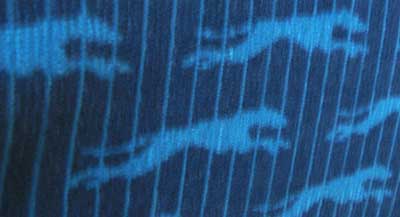 Rain cratered the Saratoga Springs bus stop parking lot puddles. I found a taxi right away, but the driver had never head of Yaddo either. And he was al local. I was starting to think that Yaddo was fictional. Makes sense considering it’s a place you hear about most from fiction writers. I quickly learned, from my chatty cranked-up cabbie, that he was really a bricklayer – in the union and everything, he assured me – who had only just started driving a cab after his recent injury. Luckily I had consulted a number of online maps prior to my departure and was able to tell him where to take me: it’s on Union Avenue, past the racetrack. It’s an estate; look for a gate, or an archway or something. So what are you going to do at Ya-doo; he wants to know. It’s a place for artists and writers… You mean poets? Yeah… Well, it turns out my fast-talking bricklaying cabbie is a poet. What do I want to hear – a wisdom poem, a love poem, or what? Okay, give me your best wisdom poem. And off he goes. A street poet. A white rapper. Very 8 Mile.
Rain cratered the Saratoga Springs bus stop parking lot puddles. I found a taxi right away, but the driver had never head of Yaddo either. And he was al local. I was starting to think that Yaddo was fictional. Makes sense considering it’s a place you hear about most from fiction writers. I quickly learned, from my chatty cranked-up cabbie, that he was really a bricklayer – in the union and everything, he assured me – who had only just started driving a cab after his recent injury. Luckily I had consulted a number of online maps prior to my departure and was able to tell him where to take me: it’s on Union Avenue, past the racetrack. It’s an estate; look for a gate, or an archway or something. So what are you going to do at Ya-doo; he wants to know. It’s a place for artists and writers… You mean poets? Yeah… Well, it turns out my fast-talking bricklaying cabbie is a poet. What do I want to hear – a wisdom poem, a love poem, or what? Okay, give me your best wisdom poem. And off he goes. A street poet. A white rapper. Very 8 Mile.
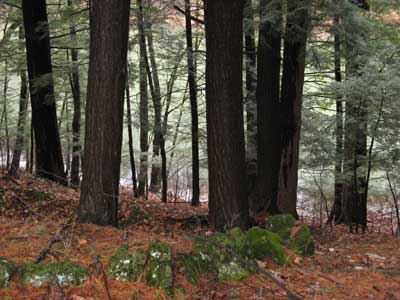 Just when I think he’s going to challenge me to a poetry slam duel right there in the cab, he spots the gate. Ya-doo! he cries. Good eye. We turn in onto a narrow road that winds through close tall evergreens, across a river, past a waterfall… So you’ve never been here before? No. Damn! Now that’s a mansion. We take a few wrong turns and wind up out on the road again. He pulls a u-turn across four lanes of traffic and then another one and there we are back at the gate. When we finally find the office I ask him to wait till I find someone who can tell me where to take my luggage. He comes into the office with me. We’re both impressed by how old the building is. This wall is plaster, he says. You couldn’t punch a hole through it if you tried. Good to know. A few minutes later, and not a moment too soon, the programme coordinator gets into the cab with us and we proceed deeper into the estate. At the dreamy creamy cottage that will be my home for the next 5.5 weeks, we get out and I ask my cabbie what I own him. Whatever you want to give, he says. This one’s off-meter.
Just when I think he’s going to challenge me to a poetry slam duel right there in the cab, he spots the gate. Ya-doo! he cries. Good eye. We turn in onto a narrow road that winds through close tall evergreens, across a river, past a waterfall… So you’ve never been here before? No. Damn! Now that’s a mansion. We take a few wrong turns and wind up out on the road again. He pulls a u-turn across four lanes of traffic and then another one and there we are back at the gate. When we finally find the office I ask him to wait till I find someone who can tell me where to take my luggage. He comes into the office with me. We’re both impressed by how old the building is. This wall is plaster, he says. You couldn’t punch a hole through it if you tried. Good to know. A few minutes later, and not a moment too soon, the programme coordinator gets into the cab with us and we proceed deeper into the estate. At the dreamy creamy cottage that will be my home for the next 5.5 weeks, we get out and I ask my cabbie what I own him. Whatever you want to give, he says. This one’s off-meter.
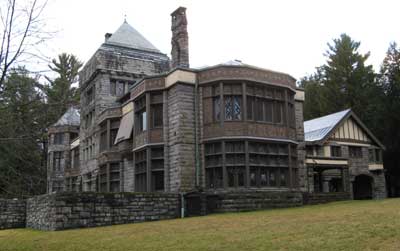 And so now all of a sudden I’m here. Yaddo does exist after all. The mansion is closed for the winter, though it hardly feels like winter. It’s January and the grass is green. I live in Pine Garde, a house much lovelier than its name, which is evocative of cleaning supplies and deodorants. My studio is in the sun porch. My other studio is in the back off of my bedroom. Two studios? Yes, and an en suite bathroom. And a kitchen and living room with a working fireplace and only one other writer living and working in the house. Could I be dreaming all this? It is quite possible that I am.
And so now all of a sudden I’m here. Yaddo does exist after all. The mansion is closed for the winter, though it hardly feels like winter. It’s January and the grass is green. I live in Pine Garde, a house much lovelier than its name, which is evocative of cleaning supplies and deodorants. My studio is in the sun porch. My other studio is in the back off of my bedroom. Two studios? Yes, and an en suite bathroom. And a kitchen and living room with a working fireplace and only one other writer living and working in the house. Could I be dreaming all this? It is quite possible that I am.
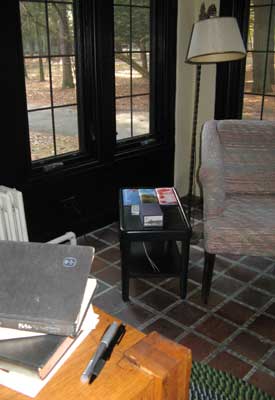 I arrived at Yaddo exhausted, trailing a string of late nights, sleepless nights, groggy mornings and busy days. I’m sure I made a less than clever first impression. I kept re-asking people’s names at dinner but they were nice about it. Most imagined Montreal was a long day’s travel from Saratoga. And in an attempt to justify my mental sluggishness I did little to dispel this myth. Geographically Montreal and New York City are the same distance from Saratoga Springs. Culturally, New York is very close to here. Many of the New Yorkers in residence have been to Montreal and love the city. I am the only Canadian here at the moment and although I have not traveled a greater distance than most to get here, yesterday, after dinner, perusing the library of Yaddo Authors, it came over me what a long journey it has been.
I arrived at Yaddo exhausted, trailing a string of late nights, sleepless nights, groggy mornings and busy days. I’m sure I made a less than clever first impression. I kept re-asking people’s names at dinner but they were nice about it. Most imagined Montreal was a long day’s travel from Saratoga. And in an attempt to justify my mental sluggishness I did little to dispel this myth. Geographically Montreal and New York City are the same distance from Saratoga Springs. Culturally, New York is very close to here. Many of the New Yorkers in residence have been to Montreal and love the city. I am the only Canadian here at the moment and although I have not traveled a greater distance than most to get here, yesterday, after dinner, perusing the library of Yaddo Authors, it came over me what a long journey it has been.
Last night I crawled into bed early with a stack of books written by illustrious guests of Yaddo, some written at Yaddo, some quite possibly written in my Pine Garde sun porch. I fell asleep immediately and for the first time in weeks I slept heavily and for a long time.

Toward morning I dreamt that I was at Yaddo. I have been having this dream for years, but this time it was much more vivid. Finally, all the details filled in. I woke up and guess what! A dream come true.
. . . . .
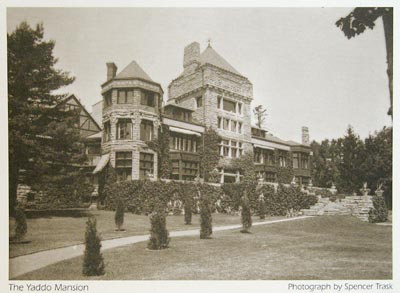
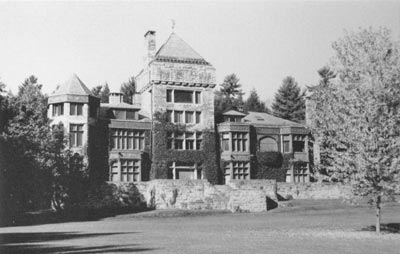
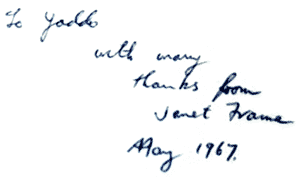
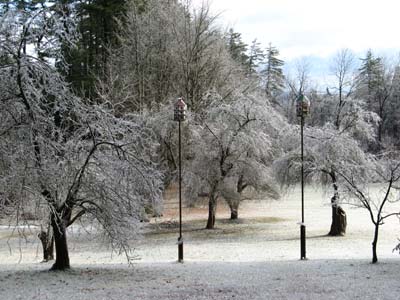
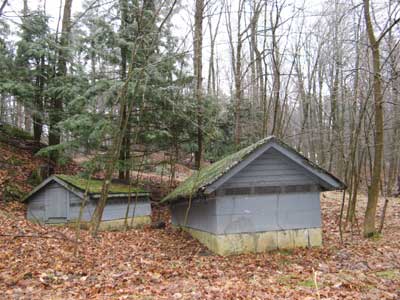
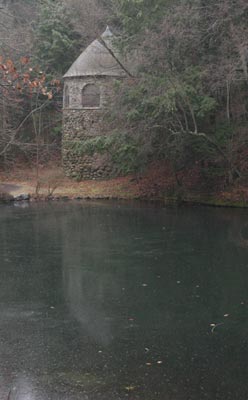
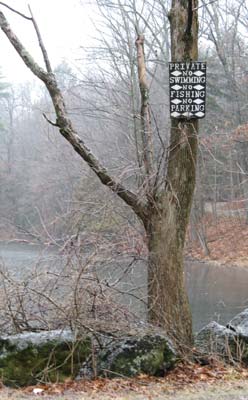
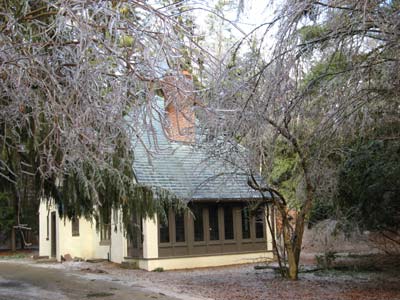
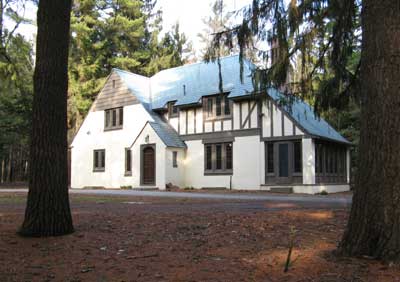
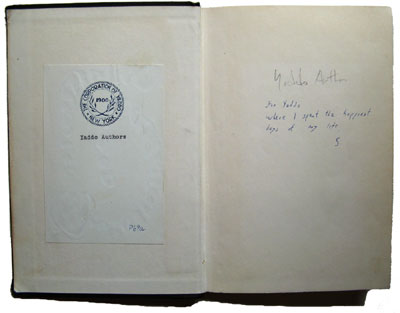
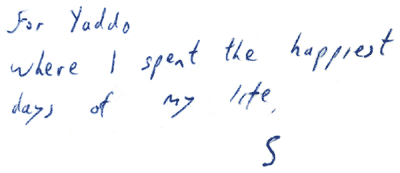
 Rain cratered the Saratoga Springs bus stop parking lot puddles. I found a taxi right away, but the driver had never head of Yaddo either. And he was al local. I was starting to think that Yaddo was fictional. Makes sense considering it’s a place you hear about most from fiction writers. I quickly learned, from my chatty cranked-up cabbie, that he was really a bricklayer – in the union and everything, he assured me – who had only just started driving a cab after his recent injury. Luckily I had consulted a number of online maps prior to my departure and was able to tell him where to take me: it’s on Union Avenue, past the racetrack. It’s an estate; look for a gate, or an archway or something. So what are you going to do at Ya-doo; he wants to know. It’s a place for artists and writers… You mean poets? Yeah… Well, it turns out my fast-talking bricklaying cabbie is a poet. What do I want to hear – a wisdom poem, a love poem, or what? Okay, give me your best wisdom poem. And off he goes. A street poet. A white rapper. Very 8 Mile.
Rain cratered the Saratoga Springs bus stop parking lot puddles. I found a taxi right away, but the driver had never head of Yaddo either. And he was al local. I was starting to think that Yaddo was fictional. Makes sense considering it’s a place you hear about most from fiction writers. I quickly learned, from my chatty cranked-up cabbie, that he was really a bricklayer – in the union and everything, he assured me – who had only just started driving a cab after his recent injury. Luckily I had consulted a number of online maps prior to my departure and was able to tell him where to take me: it’s on Union Avenue, past the racetrack. It’s an estate; look for a gate, or an archway or something. So what are you going to do at Ya-doo; he wants to know. It’s a place for artists and writers… You mean poets? Yeah… Well, it turns out my fast-talking bricklaying cabbie is a poet. What do I want to hear – a wisdom poem, a love poem, or what? Okay, give me your best wisdom poem. And off he goes. A street poet. A white rapper. Very 8 Mile. Just when I think he’s going to challenge me to a poetry slam duel right there in the cab, he spots the gate. Ya-doo! he cries. Good eye. We turn in onto a narrow road that winds through close tall evergreens, across a river, past a waterfall… So you’ve never been here before? No. Damn! Now that’s a mansion. We take a few wrong turns and wind up out on the road again. He pulls a u-turn across four lanes of traffic and then another one and there we are back at the gate. When we finally find the office I ask him to wait till I find someone who can tell me where to take my luggage. He comes into the office with me. We’re both impressed by how old the building is. This wall is plaster, he says. You couldn’t punch a hole through it if you tried. Good to know. A few minutes later, and not a moment too soon, the programme coordinator gets into the cab with us and we proceed deeper into the estate. At the dreamy creamy cottage that will be my home for the next 5.5 weeks, we get out and I ask my cabbie what I own him. Whatever you want to give, he says. This one’s off-meter.
Just when I think he’s going to challenge me to a poetry slam duel right there in the cab, he spots the gate. Ya-doo! he cries. Good eye. We turn in onto a narrow road that winds through close tall evergreens, across a river, past a waterfall… So you’ve never been here before? No. Damn! Now that’s a mansion. We take a few wrong turns and wind up out on the road again. He pulls a u-turn across four lanes of traffic and then another one and there we are back at the gate. When we finally find the office I ask him to wait till I find someone who can tell me where to take my luggage. He comes into the office with me. We’re both impressed by how old the building is. This wall is plaster, he says. You couldn’t punch a hole through it if you tried. Good to know. A few minutes later, and not a moment too soon, the programme coordinator gets into the cab with us and we proceed deeper into the estate. At the dreamy creamy cottage that will be my home for the next 5.5 weeks, we get out and I ask my cabbie what I own him. Whatever you want to give, he says. This one’s off-meter.  And so now all of a sudden I’m here. Yaddo does exist after all. The mansion is closed for the winter, though it hardly feels like winter. It’s January and the grass is green. I live in Pine Garde, a house much lovelier than its name, which is evocative of cleaning supplies and deodorants. My studio is in the sun porch. My other studio is in the back off of my bedroom. Two studios? Yes, and an en suite bathroom. And a kitchen and living room with a working fireplace and only one other writer living and working in the house. Could I be dreaming all this? It is quite possible that I am.
And so now all of a sudden I’m here. Yaddo does exist after all. The mansion is closed for the winter, though it hardly feels like winter. It’s January and the grass is green. I live in Pine Garde, a house much lovelier than its name, which is evocative of cleaning supplies and deodorants. My studio is in the sun porch. My other studio is in the back off of my bedroom. Two studios? Yes, and an en suite bathroom. And a kitchen and living room with a working fireplace and only one other writer living and working in the house. Could I be dreaming all this? It is quite possible that I am.  I arrived at Yaddo exhausted, trailing a string of late nights, sleepless nights, groggy mornings and busy days. I’m sure I made a less than clever first impression. I kept re-asking people’s names at dinner but they were nice about it. Most imagined Montreal was a long day’s travel from Saratoga. And in an attempt to justify my mental sluggishness I did little to dispel this myth. Geographically Montreal and New York City are the same distance from Saratoga Springs. Culturally, New York is very close to here. Many of the New Yorkers in residence have been to Montreal and love the city. I am the only Canadian here at the moment and although I have not traveled a greater distance than most to get here, yesterday, after dinner, perusing the library of Yaddo Authors, it came over me what a long journey it has been.
I arrived at Yaddo exhausted, trailing a string of late nights, sleepless nights, groggy mornings and busy days. I’m sure I made a less than clever first impression. I kept re-asking people’s names at dinner but they were nice about it. Most imagined Montreal was a long day’s travel from Saratoga. And in an attempt to justify my mental sluggishness I did little to dispel this myth. Geographically Montreal and New York City are the same distance from Saratoga Springs. Culturally, New York is very close to here. Many of the New Yorkers in residence have been to Montreal and love the city. I am the only Canadian here at the moment and although I have not traveled a greater distance than most to get here, yesterday, after dinner, perusing the library of Yaddo Authors, it came over me what a long journey it has been. 